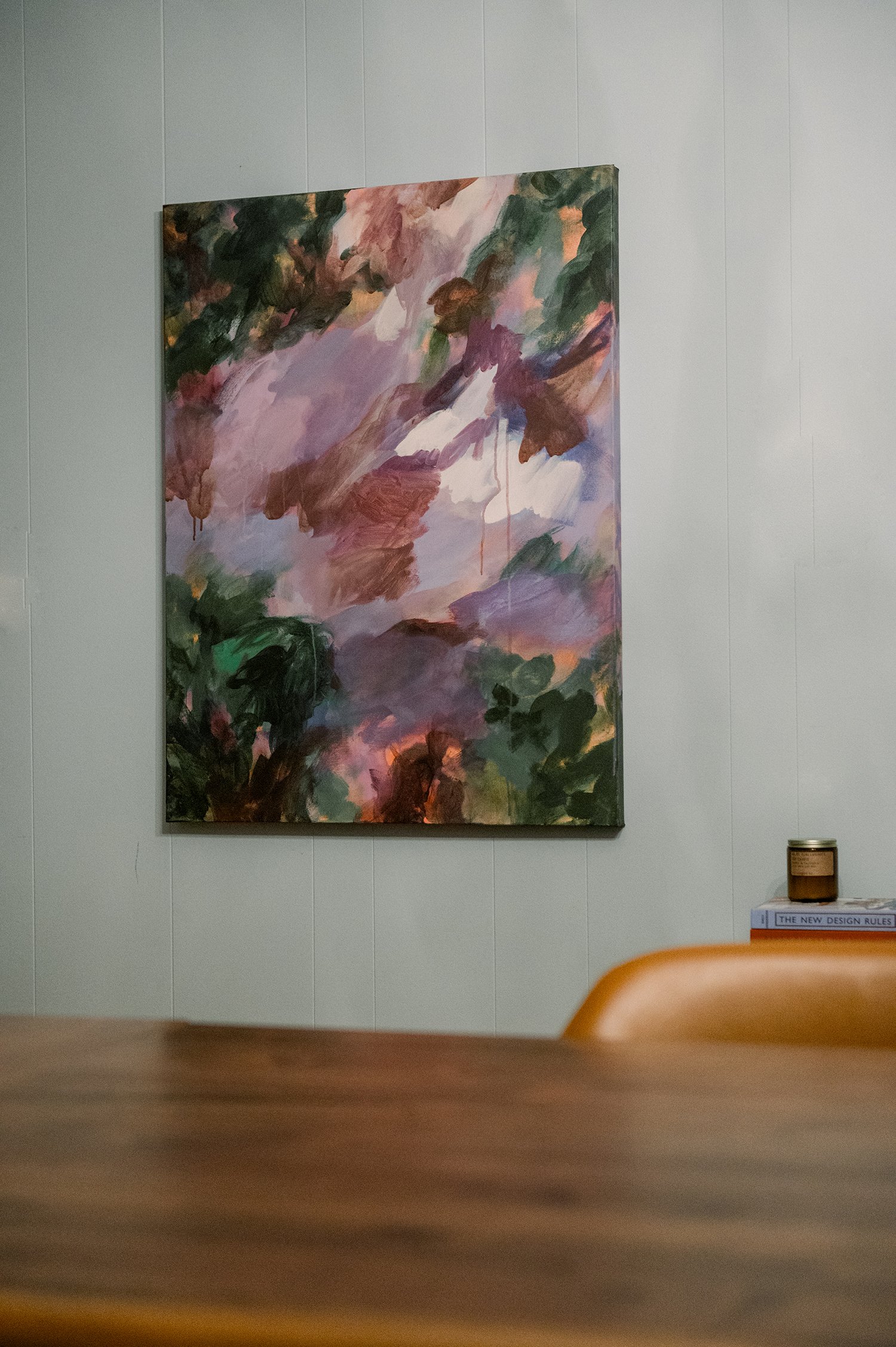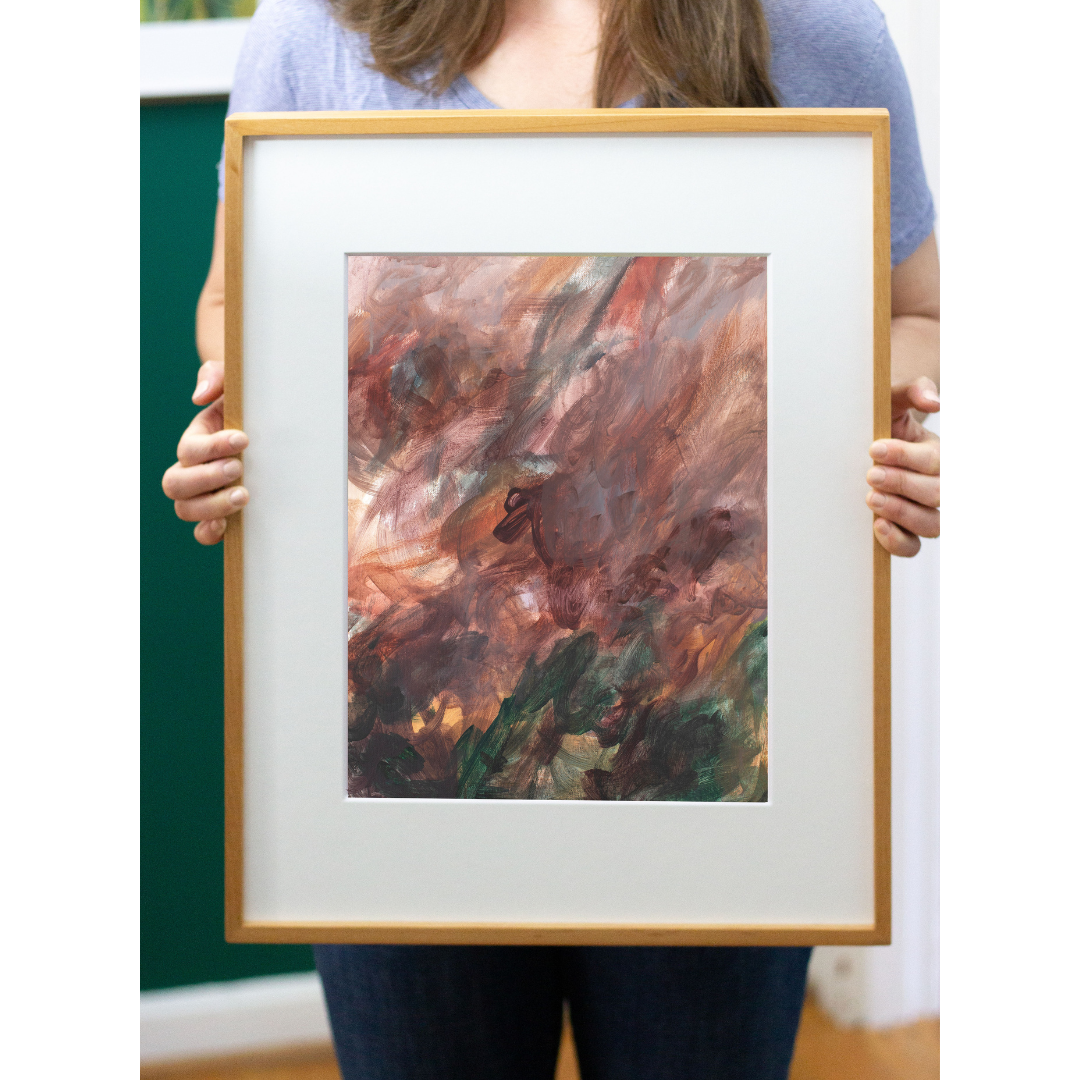Buying Art: Originals vs. Prints
March 4, 2024
Above: Lessons In Enough, 48x60 inches, available
When collecting artwork, you have two main options: Originals, which are one-of-a-kind artworks handmade by the artist, or Prints, which are reproductions or photographs of original artworks mechanically printed with ink.
One of the most frequently asked questions from new art collectors is—should I buy original artwork or prints? How do I decide? (And, does it matter?)
And the short answer is—it depends.
Personally, my art collection includes both originals and prints. (And in fact, I collect about half of each.)
How do you decide between buying original artwork or prints? Read on for my best tips!
Above: Surrender, 30x40 inches, available
What to Know About Buying Original Artwork
Compared to prints, original artwork is pricier due to the extra time, care, materials, and prestige. But the higher price is worth the investment for the colors, textures, and unique emotion that you get from a piece of original art.
Personally, I like to invest in at least one to two originals per year. I prioritize buying originals from artists whose work and stories I especially admire (especially artists whose career trajectories indicate that their artwork is increasing in value over time—making my original a true investment).
I also buy originals for artworks that have a lot of three-dimensional texture, or artworks that have unique colors (metallic, neon, etc.) or other effects that are difficult to capture via photographs and mechanical printing.
For instance, I own four originals by Deeann Rieves, an artist who embroiders and collages papers to create highly textured, mixed-media paintings. I also own an original by Sydney Gruber, who paints with metallic and seals her paintings with a high-gloss resin, making her paintings highly reflective.
Theoretically, I could buy prints from these artists, but I’d rather stay true to the look and feel of the artwork, so I buy originals.
Lastly, I recommend prioritizing originals when investing in a large, statement painting that you know you’ll have and treasure for many years—a large painting for above a couch, or the featured painting in a dining room or main bedroom, for example.
The larger the artwork, the more obvious it is that it’s a print or an original. So, if I’m buying a large piece of art and I can afford it, I buy the original.
Buy original artwork when:
The artist is one you especially love or admire
The artist is increasing in value—making their originals an investment
The artwork is highly textured or has unique colors or effects
The artwork is a statement piece, and/or It will hang in a prominent place in your home
Left: Beginning Again print / Right: Arizona Sunrise print
What to Know About Buying Prints
Compared to originals, prints are a lot more affordable—which is great, because investing in prints means that you can collect way more art, especially on a budget.
I buy several prints every year, adding to my art collection more spontaneously based on pieces that speak to me in the moment.
I also buy prints when I have a specific place in mind where I’d like to hang that particular artwork, but I need a different size than the original.
Often, the very first piece of art that I buy from an artist might be a print—even though I may be thinking of investing in an original down the road. This is because I like to get a feel for having an artist’s work in my home before investing further, and prints are an easy and affordable way to do that while adding new art to my home.
A few things to look out for when buying art prints:
Limited-edition – Most prints are “open-edition,” meaning that the artist reserves the right to print and sell an unlimited number of prints of that particular image. (If the listing doesn’t specify, you can assume the print is open-edition.)
Limited-edition prints are special because the artist has set a limit for the number of prints of that particular image that can be reproduced. (The exact number should be specified in the listing.)
So, for example, a “limited edition of 50” means that there will only ever be 50 copies of that particular image in that particular size made, making it extra rare and special (and also, more expensive). Limited-edition prints are often signed by the artist, unlike open-edition prints.
I don’t often see many artists selling limited-edition prints, but when I do, I tend to invest quickly. (Partially because I want to secure my print before they sell out, and also because it’s more prestigious and valuable to have a lower number in the edition—1/50 vs. 22/50, for example.) Personally, I own limited-edition prints by Joy Kinna, Raven Roxanne, and Emily Jeffords—and open-edition prints by many others.
Giclee/archival – If you want your art collection to last a long time, make sure that the listing indicates that the prints are giclee or archival. This means that they have been made using light-fast, archival inks (resistant to weathering and fading), and they have been printed on acid-free, archival paper or canvas (resistant to yellowing or deterioration).
You can almost always guarantee that a print is archival when you buy directly from an artist’s studio—as most artists care deeply about their work and put in the extra care and effort to make sure their prints are archival. Buying archival prints from larger stores or corporations is less guaranteed.
Detail images – Look (or ask) for close-up images of actual prints to see how crisp the images are. Sharp, crisp images create highly detailed prints whose textures can easily be mistaken for originals. Again, when buying prints directly from an artist, sharp images and crisp details are usually a given.
Direct from the artist – As you may have gathered, buying prints is an excellent option, especially when you’re buying directly from the artist. When buying direct from an artist’s studio (versus buying a print from a store or large online retailer), you can trust the quality and you know that 100% of the profit goes to the artist.
In fact, prints are often more profitable for artists than originals—and print sales help support artists during slower times when original sales or the artist’s creativity are low. So when you invest in a print directly from an artist, you’re investing in that artist’s livelihood, which is always appreciated!
Shop these limited-edition floral prints
Buy art prints when:
You want the freedom to invest in a lot of art spontaneously.
You want to live with an artist’s work before investing further in an original.
The print is limited-edition, making it more unique and valuable.
You love a particular artwork, but you need a different size for where you’d like to hang it.
The print is coming directly from an artist’s studio—so you can trust its quality and you know you’re supporting the artist.
Right: Decide, Today
Really, the same advice applies to buying originals as it does to buying prints: Buy what you love, and don’t let any pre-determined rule sway you otherwise!
Both originals and art prints are good and valuable in any art collection. When all is said and done, how much you collect of each is really just a matter of personal preference. :)
You might also like: How to Collect Art






